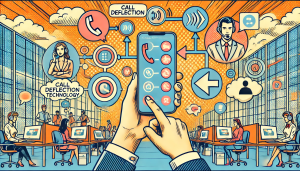What is one difference between jobs in customer support vs customer experience?
To help you differentiate between jobs in customer support and customer experience, we asked founders and business leaders this question for their best insights. From specific technical skills vs broad soft skills to one being transactional and the other relationship-building, there are several insights that may help you relate better to the distinct roles of customer support and customer experience in the workplace.
Here are 12 differences between customer support and customer experience:
- Specific Technical Skills vs Broad Soft Skills
- Customer Experience Maximizes Brand-specific Qualities
- Experience is Collective While Support is Individual
- Customer Experience is An Ongoing Process
- Partial while vs More Holistic
- Data-focused vs Human Interactions
- Automating The Process vs Humanizing The Buyer’s Journey
- Small Picture vs Big Picture
- Customer Experience is a Culture
- Support is Reactive and Experience is Proactive
- Transactional vs Relationship-building
Specific Technical Skills vs Broad Soft Skills
Customer experience requires specific technical skills. Representatives have to know the ins and outs of the sales funnel, from building awareness to closing the sale. They also need to know details about products and explain how they work. Meanwhile, customer support or customer care roles require broad soft skills, like active listening and adaptability. It’s a problem-solving job, with the aim of preserving customer loyalty once a sale is concluded.
Phillip Lew, C9 Staff
Customer Experience Maximizes Brand-Specific Qualities
Working a role in customer experience has much more to do with branding and marketing than working in customer service. Customer experience employees learn, research, and facilitate customers’ overarching impressions and experiences of a company through initial impression management, brand messaging, social media presence, email responsiveness, and many other factors that influence consumers’ feelings about a brand. Customer experience employees understand how consumers interact with brands across various media and platforms and develop holistic strategies to optimize these interactions for maximum brand profitability. Especially today, customers respond best to brands that personalize themselves directly to their consumers.
By focusing on engaging positive and empathetic customer interactions across platforms, customer experience employees facilitate the best reviews, satisfaction ratings, and customer retention due to customers’ overall impressions of interacting with a business.
James Shalhoub, Finn
Experience is Collective While Support is Individual
The difference between customer experience and customer support is simple: one addresses the consumer as a group and the other addresses the consumer as an individual. In practice, both are required if you wish to maximize satisfaction and encourage brand loyalty. To give an example: jobs in customer support address individual issues faced by customers. For instance, a customer might ask about the progress of their delivery or need help making a return. These are individual needs, benefiting only the customer who asks the question.
Customer experience, on the other hand, addresses the “collective” impression that your customers have of your company throughout every stage of the buyer’s journey. This has a broad scope; it involves everything from crafting a seamless checkout experience to having a fair returns policy, to offering discounts for long-term customers. It consists of work ‘behind the scenes to curate a congruent, high-quality experience that customers truly appreciate.
Aaron Gray, Agency 101
Solving Specific Issues vs Providing Value
While both customer experience and customer support are part of the entire customer journey, and deeply incorporate close customer interaction, they’re quite unique in themselves. Customer experience agents are all about providing value to customers and leading them down the sales funnel. Customer support roles generally focus on solving specific issues, taking customer feedback, and maintaining customer loyalty after the sale. Both types of customer service team members help ensure a positive customer experience and may receive customer satisfaction scores. Chris Abrams, Marcan Insurance
Chris Abrams, Marcan Insurance
Customer Experience is An Ongoing Process
Customer service jobs require an employee to assist and advocate for customers before, during, and after the purchase of a product or service. On the other hand, customer experience jobs involve all the ways in which a customer interacts with a company and how those interactions are perceived. Customer service jobs are directly focused on providing a fast response and empathetic interactions over the customers’ preferred channel. Meanwhile, customer experience roles have a broad range across many touchpoints. Customer experience is an ongoing process that includes everything from marketing materials, and the sales experience to the quality of the product itself. Customer experience even encompasses customer service. The key difference is in the focus of customer service on providing a positive interaction for customers when they are directly engaging with a product or service.
Liza Kirsh, DYMAPAK
Partial vs More Holistic
Customer support is very narrow, and targeted at a specific part of the customer experience. However, customer experience, as a job, is more holistic. It requires more attention and effort at the outset and asks more of the customer service representative. Customer support aims to save the relationship that those in customer experience have spent time and energy building up, so they’re on opposite ends of the entire customer journey.
Vanessa Molica, The Lash Professional
Data-focused vs Human Interactions
Customer support focuses on actual customer care interactions, answering questions, giving advice, and offering assistance. Customer experience is about the entire journey the customer takes when interacting with a brand. From the first advertisements they see all the way through purchasing and retention, all of these things fall under the banner of customer experience. A job in customer experience doesn’t necessarily require direct customer interactions– it could be entirely data-focused. A job in customer support is entirely about talking to people and helping them through whatever phase of the customer experience they’re in.
Jaymee Messler, The Gaming Society
Automating The Process vs Humanizing The Buyer’s Journey
Customer experience paves the way for customer satisfaction, then customer support comes in to assist where their automated systems fall short. Marketing teams develop features via copywriting and web design that make the customer journey more appealing to leads. Their goal is to make the customer’s experience as easy as possible without needing live assistance. Customer experience eliminates the need for employees to hold the visitor’s hand through the purchasing process. Of course, automation can’t solve every problem. So employees enter the sales funnel to guide customers and clear their doubts. Customer support humanizes the buyer’s journey.
Nancy Mitchell, Assisted Living Center
Small Picture vs Big Picture
Customer support is only one facet of customer experience, with the latter describing the entire customer journey from start to finish. Customer experience aims to understand the bigger picture by observing the distinct phases of customer-business interactions. A job in customer experience means monitoring data on acquisition, onboarding, retention, and advocacy through the various touchpoints along the way. Customer support is a part of that journey, but it focuses on providing assistance and advice. Rather than looking at data and overall trends, customer support interacts directly with customers with the goal of helping them with their immediate needs and concerns.
Soumya Mohan, Poised
Customer Experience is a Culture
Customer experience is more than simply asking, “How can we help?”. It’s the step-by-step process of acclimating a consumer to your brand and giving them what they need to solve their needs. This ranges from pre-purchase, where the customer lacks awareness of what you do, all the way to post-purchase, where the customer has evaluated you against competitors and decided to move forward with your services. As such, it involves a culmination of different factors, shifting in priority from one stage to the next. For example, seamless navigation takes precedence during the earliest stages of a customer’s journey. In the end, however, customer support and post-purchase communication become increasingly relevant and valuable when the customer is well-acquainted. Identifying these distinctions is essential for carving out a supportive company culture, streamlining the customer experience, and driving all forms of repeat business.
Max Wesman, GoodHire
Support is Reactive and Experience is Proactive
One difference between jobs in customer support and customer experience is that the customer support role is often more reactive, while the customer experience role is more proactive. In a support role, you may be responding to customer complaints or addressing issues that have arisen. In a customer experience role, you are working to create a positive experience for customers even before they encounter any problems. Another difference is that a customer support role may require more technical knowledge. Meanwhile, a customer experience role may require more interpersonal skills
Adam Gaskill, CRC Industries
Transactional vs Relationship-building
Customer support focuses on relationship-building, maintenance, and loyalty to the consumer. On the other hand, customer experience is primarily transactional since it includes everything from initial awareness to aftercare. The role of a customer support agent is to help maintain a customer’s positive experience by solving the issue at hand. Alternatively, customer experience agents are doing their best to provide a good experience, but the ultimate goal is to make a sale.
Retta Kekic, Qwick
Terkel creates community-driven content featuring expert insights. Sign up at terkel.io to answer questions and get published.




